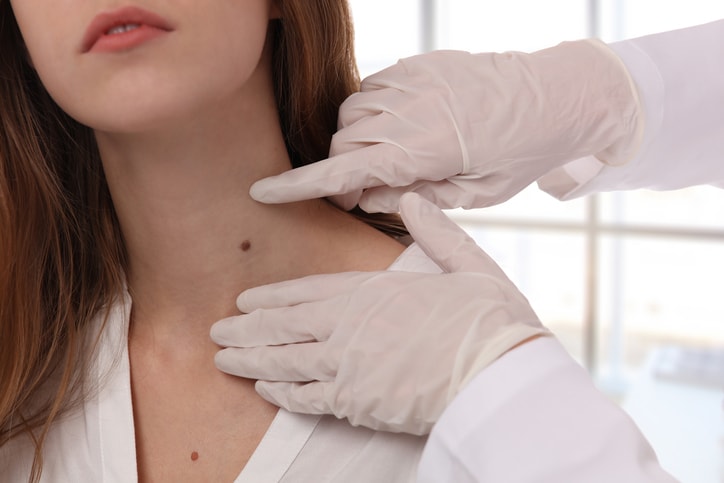Can My Mole Be Cancerous?
Almost everyone has moles, with most people having between 10 and 40. These skin growths result from pigment cells that grow in clusters. Most are harmless, but some are cancerous or pre-cancerous. In this blog, the dermatologists at Skin Center of South Miami outline some things that could indicate your mole may be cancerous:
What are some common types of moles?
Moles are often classified in three different ways, and you can have only one type or a combination. Some types of moles are more concerning than others.
- Atypical moles - These moles can appear anywhere on your body but are often found on the trunk, scalp, head, or neck. They’re often bigger than a pencil eraser and have an irregular shape and uneven color. The center is often dark brown, and their borders may be lighter or reddish and have black dots around the edge. Atypical moles often run in families, and it’s possible that they’re at increased risk of turning into skin cancer.
- Congenital moles - Congenital moles are present at birth, and about 1% of people have them. They can vary in size from small to large, and they may have an increased risk of turning into skin cancer.
- Acquired moles (also called common moles) - These moles appear after you’re born, and most moles fall into this category. They’re usually smaller than a quarter-inch in size and are most likely due to excessive sun exposure. Most of these moles won’t develop into skin cancer, but the chances are greater if you have 50 of more of them.
What types of skin cancer are related to moles?
Skin cancer is usually classified in the following ways: melanoma, basal cell carcinoma, and squamous cell carcinoma. If a mole becomes cancerous, it would be melanoma. It’s less common than the other two types of skin cancer, but if it’s not caught early, it can spread to other parts of your body.
When should you see a doctor about a mole?
The letters “ABCDE” are a good way to remember what you’re looking for. If you see any of the following, have your mole checked by a dermatologist:
- Asymmetry – One half of the mole looks different from the other half.
- Border – The mole’s borders are irregular or blurred.
- Color – It has different colors or includes shades or brown, black, tan, red, blue, or white.
- Diameter – Your mole needs further examination if its diameter is bigger than a pencil eraser.
- Evolving – A mole may look different from the other ones you have or undergo changes in size, color, or shape. It should also be checked if it starts to bleed or ooze.
When will your doctor remove a mole, and how will this be done?
If your dermatologist thinks a mole looks suspicious, he or she can take a small tissue sample (biopsy) to determine if it’s cancerous. A mole will be removed if it’s cancerous or your doctor suspects that it may be cancerous. It can also be removed if it’s causing cosmetic or other issues. Mole removal is a simple outpatient surgical procedure that doesn’t take long to complete. Your doctor will numb the area around the mole and cut or shave it out. One or two stitches may be needed to close the area..
If you have moles you’d like to have checked or would like a skin exam, make an appointment today with Skin Center of South Miami. Our experienced dermatologists will examine your moles, check for signs of cancer, and recommend the best course of action.
